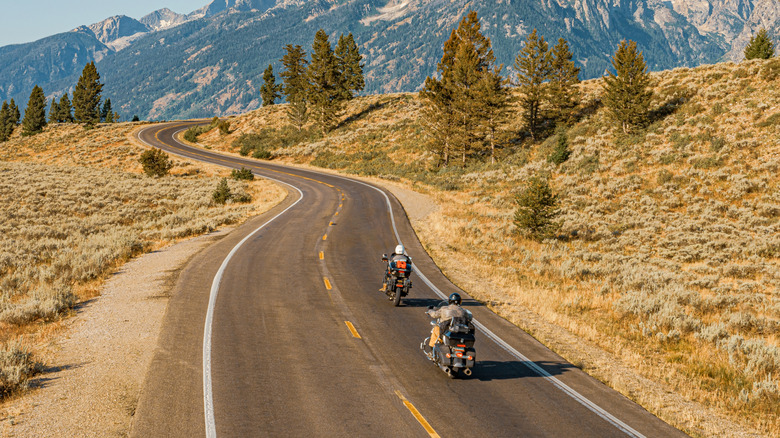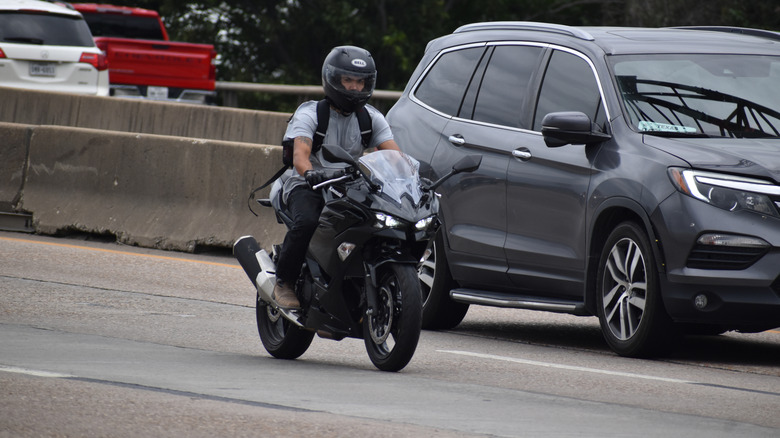What Is The 4-Second Rule Every Biker Needs To Know?
Motorcyclists face all sorts of risks on the road, but the four-second rule is there to help change that. The concept is simple: put at least four seconds of following distance between your motorcycle and the vehicle ahead of you. With this, you give yourself that crucial time you need to react to sudden stops, lane changes, or road hazards in front of you.
Unlike cars, motorcycles obviously don't have the same kind of protective structure that a vehicle body gives. Nor do they have the convenience of modern vehicle safety features like Automatic Emergency Braking. This is what makes motorcycle collisions so much more dangerous (even deadly). By following the four-second rule, riders can reduce their chances of being involved in a rear-end collision or worse.
Of course, this begs the question of how to gauge four seconds while out riding. You don't need a stopwatch... just your eyes and a landmark. Choose a fixed object up ahead of you on the side of the road, such as a sign or a tree, and start counting as soon as the vehicle in front of you passes it. If you reach the object yourself before finishing the count to four, you're following too closely and need to increase the distance between yourself and the person in front.
Why the 4-second rule matters
The importance of the four-second rule boils down to a matter of reaction time. Research shows most drivers take 1.5 to 2 seconds to respond after spotting a hazard. The four-second rule doubles that window, giving riders time to account for both the human response and the braking distance needed to bring the bike to a safe stop.
Even at slower speeds in city traffic, a vehicle ahead can stop suddenly or an obstacle can appear (and with very little warning at that). Take an annoying tailgater, for example: This dangerous habit dramatically increases the risk of rear-end crashes and leaves riders with very little room to maneuver. Put four seconds between you and the person in front of you to stay out of harm's way.
Keep in mind that four seconds is the absolute baseline. In bad weather, construction zones, or heavy traffic, you should probably give yourself more time than that. For instance, when roads are slick with rain or snow and drivers risk hydroplaning, that buffer should increase to six or more seconds. Night riding and mountain roads also call for extra caution.

